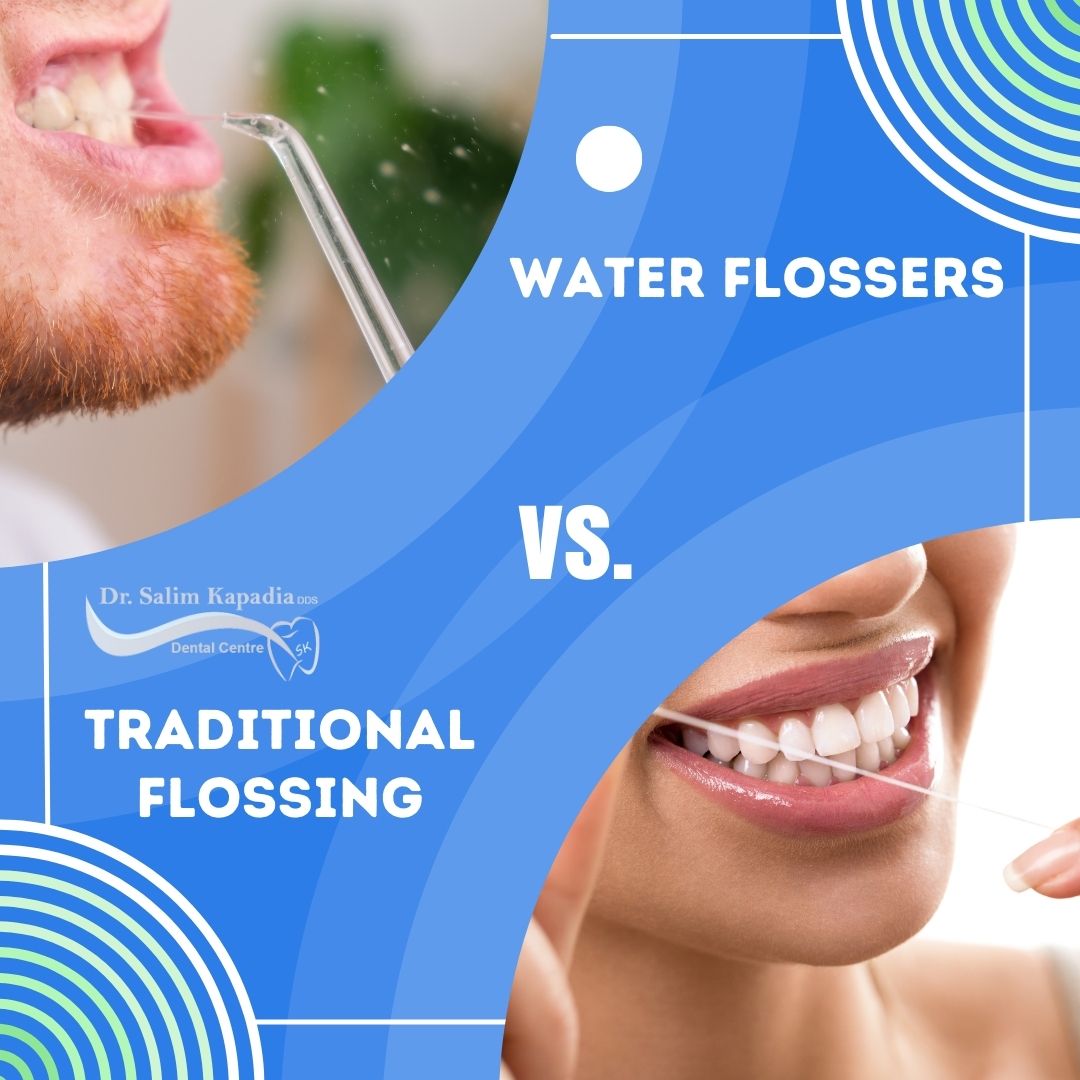
In the world of oral hygiene, flossing plays a crucial role in maintaining healthy teeth and gums. However, with the advent of water flossers, many are left wondering: which flossing method reigns supreme? Let’s delve into the pros and cons of water flossers and traditional string floss to help you decide the best fit for your dental care routine.
Traditional Flossing: The Classic Approach
Traditional string floss is a staple in oral hygiene practices. Its precision allows for the removal of food particles and plaque from between teeth and below the gumline, areas often missed by toothbrushes.
Pros:
- Precision: Offers meticulous cleaning around each tooth.
- Accessibility: Easily reaches tight spaces between teeth.
- Affordability: Cost-effective and widely available.
Cons:
- Technique-sensitive: Requires proper technique for effective cleaning.
- Can be harsh: Sometimes causes minor bleeding, especially if gums are sensitive or if technique is too aggressive.
- Inconvenience: Can be challenging for those with limited dexterity, such as individuals with arthritis.
Water Flossers: The Modern Twist
Water flossers, also known as oral irrigators, use a stream of pulsating water to remove food particles, plaque, and bacteria from between teeth and below the gumline.
Pros:
- Ease of Use: Less technique-sensitive and easier for people with braces, dental implants, or mobility issues.
- Gentle on Gums: Reduces the risk of bleeding, making it ideal for those with sensitive gums or gum disease.
- Effective Plaque Removal: Studies have shown that water flossers can be highly effective, especially in reducing gingivitis and bleeding.
Cons:
- Cost: Generally more expensive than traditional floss.
- Size: More cumbersome and requires electricity or batteries.
- Messiness: Can be messier until you get the hang of it.
Which is Better? The Verdict
The choice between water flossers and traditional flossing isn’t about which one is universally better; it’s about which one better suits your needs, preferences, and oral health condition.
- For Precision and Affordability: Traditional floss is unbeatable. It’s excellent for those who prefer a tactile and direct method of cleaning between teeth.
- For Ease of Use and Sensitivity: Water flossers offer a gentle alternative that’s particularly beneficial for people with specific dental work or sensitivity issues.
A Combined Approach
Why choose one when you can benefit from both? Many dental professionals recommend using both methods as part of your oral hygiene routine. Traditional floss can target the tight spaces between teeth with precision, while water flossers can offer a gentle and thorough cleaning for gum health.
The key to optimal oral health is consistency in your hygiene routine, whether you prefer traditional flossing, a water flosser, or a combination of both. The best flossing method is the one that you will use every day. Remember, the goal is to minimize plaque and prevent gum disease, so choose the tool that you feel comfortable and consistent with.
At our multi-award winning dental office, we’re committed to providing you with the knowledge and tools for optimal oral health. Why not take the opportunity to book your regular checkup? Receive personalized, free flossing advice along with top-notch dental care tailored to your needs. Click here to book your appointment. Your healthiest smile awaits!






